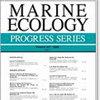Bridging the gap: integrating models and observations for better ecosystem understanding
IF 2.2
3区 环境科学与生态学
Q2 ECOLOGY
引用次数: 0
Abstract
ABSTRACT: Our understanding of complex marine ecosystem dynamics is often hindered by significant uncertainties and issues of representativeness associated with models and observations. Both observations and models provide a limited view of real-world complexities depending on what is specifically measured or simulated. When used together, they provide the ability to gain a broader understanding of important ecological processes. How to properly integrate models and observations while utilizing the advantages of both approaches remains a challenge. In this paper, we draw attention to commonly overlooked limitations of both observations and models, and use examples to illustrate potential strategies to mitigate bias, properly interpret results, and help improve both models and observations. We emphasize that proper validation of all data sources (models and observations) is necessary in all marine ecosystem studies, with a careful assessment of the spatio-temporal scales that the data represent.缩小差距:整合模型和观测数据,更好地了解生态系统
ABSTRACT: 我们对复杂海洋生态系统动态的理解往往受到与模型和观测相关的重大不确定性和代表性问题的阻碍。根据具体测量或模拟的内容,观测和模型都只能有限地反映现实世界的复杂性。当两者结合使用时,就能更广泛地了解重要的生态过程。如何在利用两种方法的优势的同时将模型和观测结果恰当地结合起来,仍然是一个挑战。在本文中,我们将提请大家注意观测数据和模型通常被忽视的局限性,并通过实例来说明减轻偏差、正确解释结果以及帮助改进模型和观测数据的潜在策略。我们强调,在所有海洋生态系统研究中,都有必要对所有数据源(模型和观测数据)进行适当验证,并对数据所代表的时空尺度进行仔细评估。
本文章由计算机程序翻译,如有差异,请以英文原文为准。
求助全文
约1分钟内获得全文
求助全文
来源期刊

Marine Ecology Progress Series
环境科学-海洋学
CiteScore
5.30
自引率
8.00%
发文量
238
审稿时长
3 months
期刊介绍:
The leading journal in its field, MEPS covers all aspects of marine ecology, fundamental and applied. Topics covered include microbiology, botany, zoology, ecosystem research, biological oceanography, ecological aspects of fisheries and aquaculture, pollution, environmental protection, conservation, and resource management.
 求助内容:
求助内容: 应助结果提醒方式:
应助结果提醒方式:


